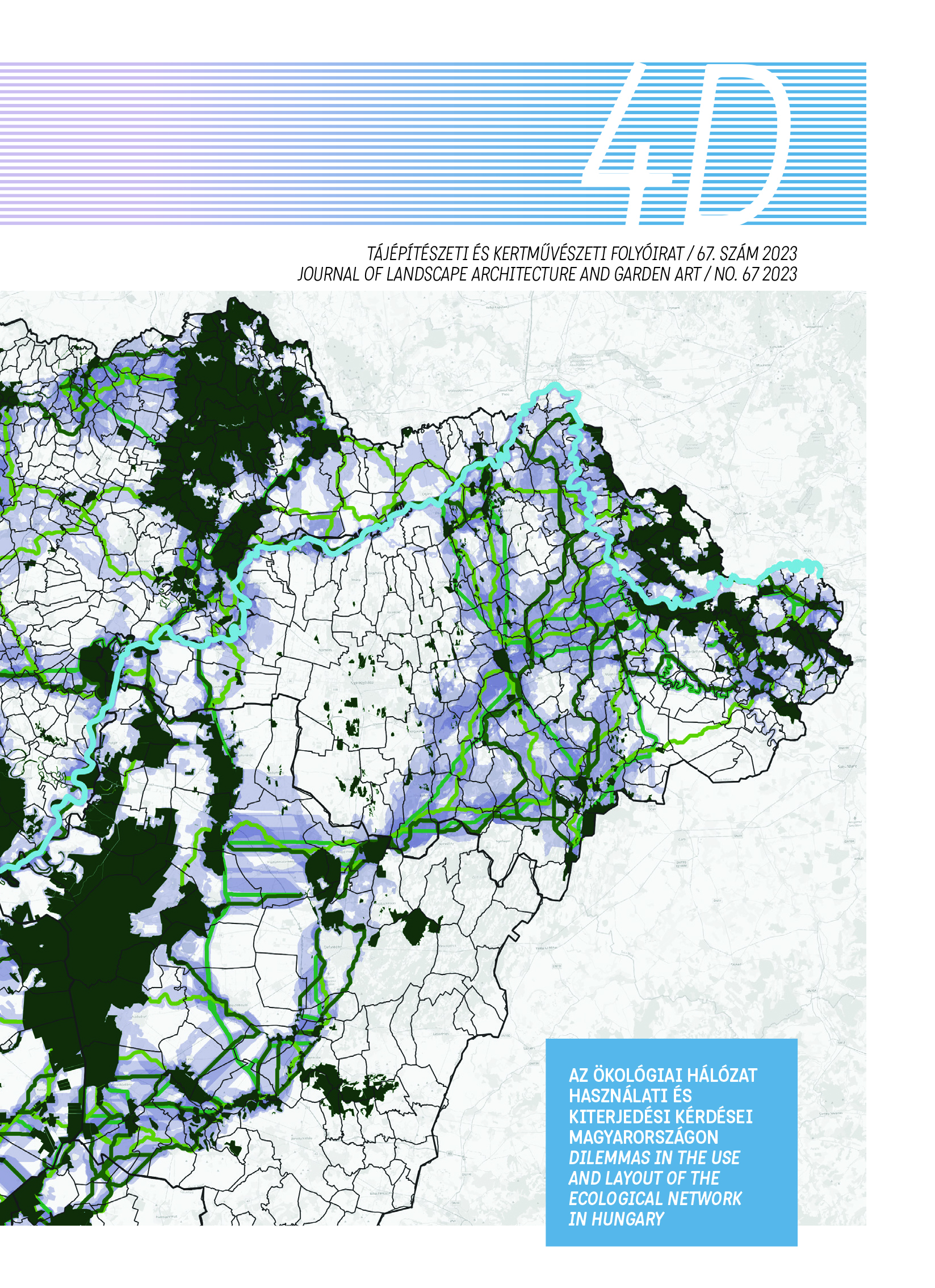The effects of the planned M2 motorway, results of SaveGreen INTERREG project in the Hungarian pilot area
The results of SaveGreen INTERREG project in the Hungarian pilot area
DOI:
https://doi.org/10.36249/4d.67.3721Keywords:
ecological corridoreAbstract
The SaveGREEN INTERREG project aims to help conserve or improve ecological corridors through integrated planning and to raise awareness of the different types of appropriate mitigation measures. In connection with the SaveGREEN project and in the framework of the university educational program of landscape architecture students, we prepared a complex landscape assessment and landscape development plan for the planned M2 border area. The SaveGREEN project builds on the results of the TRANSGREEN, ConnectGREEN and HARMON DTP projects. The project focuses on the study areas of the partner countries: the Alpine-Carpathian corridor, the South-Western Carpathians, the Zakarpattya, Beskid, Lyulin and Balkan Mountains and the critical ecological corridors of the planned M2 area in Hungary, which are most affected by transport infrastructure and unsustainable land use. In our study, we present a complex assessment of the Hungarian study area, with a special focus on the assessment of ecological corridors crossing the route of the planned M2 motorway.
References
Tari T. (2010): Autópálya vadátjárók kialakítása és használatuk értékelése. PhD értekezés, NyugatMagyarországi Egyetem Erdőmérnöki kar. Sopron
Trombulak S. C. & Frissel C.A. (2000): Review of ecological effects of roads on terrestrial and aquatic communities. Conservation Biology 14: 18–30.
Jackson S. D. (2000): Overview of transportation impacts on wildlife movement and populations. In Messmer, T. A. and West, B. (eds): Wildlife and highways: seeking solutions to an ecological and a socio-economic dilemma. The Wildlife Society, Nashville. pp. 7-20.
Andrews K. M., Gibbons J. W., & Jochimsen D. M. (2006): Literature Synthesis of the Effects of Roads and Vehicles on Amphibians and Reptiles. Federal Highway Administration (FHWA), U.S. Department of 75 Transportation, Report No. FHWAHEP-08-005. Washington, D.C. pp: 151.
Scoccianti C. (2001): Amphibia: aspetti di ecologia della conservazione lAmphibia: Aspects of Conservation Ecology]. WWF Italia, Sez. Toscana. Guido Persichino Grafica, Firenze
Seiler A. (2003): Effects of infrastructure on nature. In Trocmé, M., Cahill, S., de Vries, H. J. G., Farral, H., Folkeson, L., Fry, G., Hicks, C. and Peymen, J. (eds): Habitat fragmentation due to train
Puky M. (2005): Amphibian road kills: a global perspective. UC Davis: Road Ecology Center. Retrieved from https://escholarship.org/uc/item/7j7546qv
SaveGreen project website- https://www.interreg-danube.eu/approved-projects/savegreen
Downloads
Published
Issue
Section
License
Copyright (c) 2023 Krisztina Filepné dr. Kovács, Edina Dancsokné Fóris, Zsombor Bányai, Nóra Hubayné Horváth, Ildikó Módosné Bugyi, Dalma Varga, András Weiperth, Ágnes Sallay, Miklós Zsolt Szilvácsku, László Kollányi

This work is licensed under a Creative Commons Attribution-NonCommercial-NoDerivatives 4.0 International License.
A folyóirat Open Access (Gold). Cikkeire a Creative Commons 4.0 standard licenc alábbi típusa vonatkozik: CC-BY-NC-ND-4.0. Ennek értelmében a mű szabadon másolható, terjeszthető, bemutatható és előadható, azonban nem használható fel kereskedelmi célokra (NC), továbbá nem módosítható és nem készíthető belőle átdolgozás, származékos mű (ND). A licenc alapján a szerző vagy a jogosult által meghatározott módon fel kell tüntetni a szerző nevét és a szerzői mű címét (BY).



